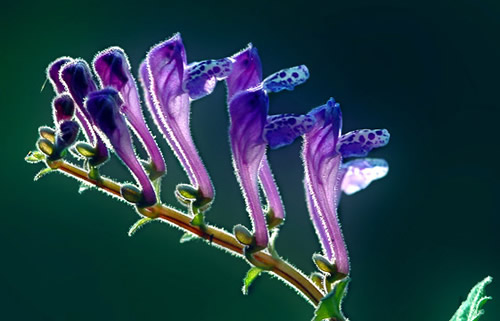Perennial: lives at least three years. It is an herbaceous ground cover, quite low growing despite the picture of the flower. The stems spread along the ground and then turn upwards at the tip so the base can spread 24" but the height is only about a foot.
Germination: Grow from seeds indoors starting in early spring and transplant outdoors in summer.
Plant: full sun to shade. Baikal skullcap is drought tolerant once established.
Flowers: August. Collect seeds in September.
Harvest: the roots of 3-4 year old plants in spring or autumn.
Taste: bitter.
Uses: the leaves can be eaten as a vegetable or dried and used as a tea substitute.
Medicinal Uses: Baikal Skullcap has a 2000 year history in Chinese medical herbalism and is ranked among the 50 most important plants. It is used to treat fevers, jaundice, liver disease, dysentery, diarrhea, urinary tract infection, and internal hemorrhaging. It was one of the seven herbs in PC-SPECS used to treat prostate cancer. It is also used to treat impaired brain function.
Warnings: not for use by insulin-dependent diabetics.
Habitat Considerations: 100-2000 meters above sea level.
Notes: Commercial production is being encouraged because of the high value of the flavonoids that accumulate in the roots: baicalein and baicalin.

|
